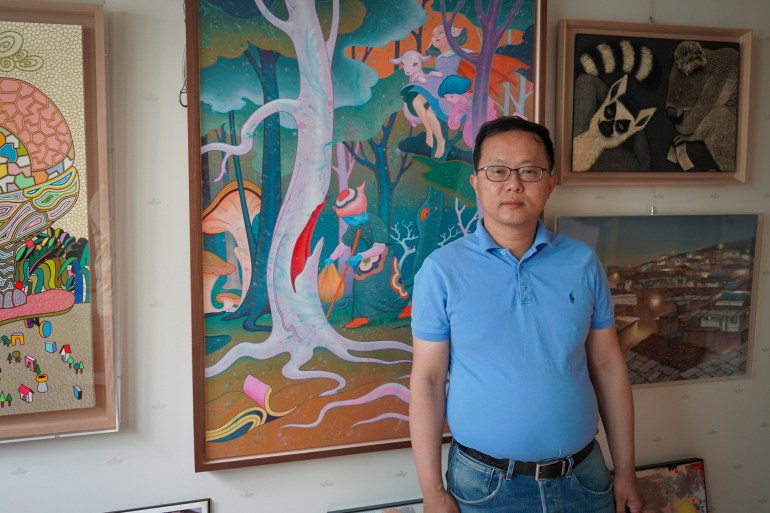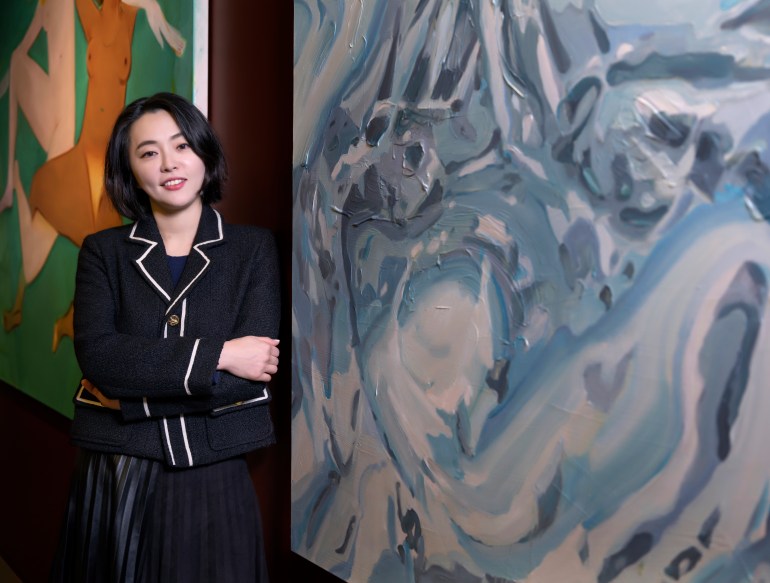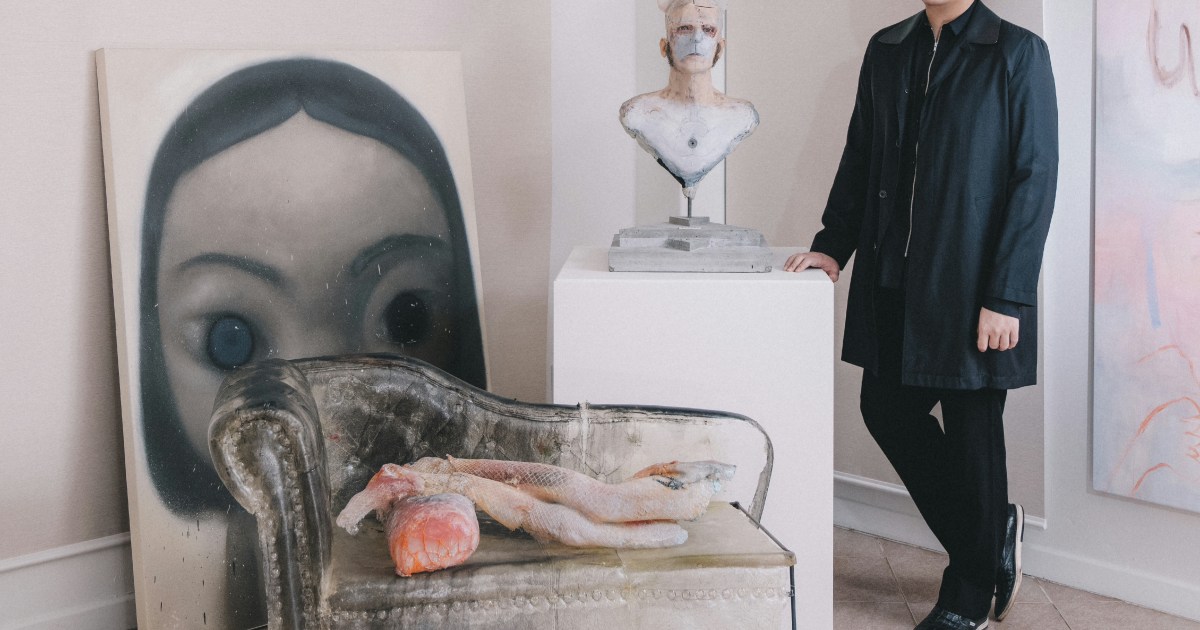South Korea’s millennial investors swap stocks for art
Incheon, South Korea – Kim, 35, did not explicitly object when his wife started investing in art three years ago – but he had his reservations.
“I told her that I’m fine as long as you want it,” the video game designer, who asked to be identified by his last name only, told Al Jazeera.
“But I was secretly thinking, why not just invest that money into stocks or something?”
But as time passed, Kim began to appreciate how art could offer an escape from the COVID-19 pandemic and the monotony of work. Last year, he joined her in collecting fine art.
Kim is part of a young generation of art collectors who are shaking up South Korea’s art market, which has been long dominated by collectors aged in their 60s and above.
Rise of young collectors
Galleries and auction houses experienced a surge in art collectors in their 30s and 40s during the pandemic, according to a report released last year by Korea Arts Management Service (KAMS).
K-Auction, an auction house in Seoul’s upscale Gangnam district, reported that more than half of winning bidders last year were in their 40s or younger.
Thanks to the influx of younger buyers, South Korea’s art market grew almost three-fold last year, according to KAMS, reaching an estimated value of 920 billion won ($714m).
The sudden growth has been widely attributed to revenge spending after the end of pandemic restrictions, but some young collectors have also found their new hobby to be unexpectedly lucrative.
“One close friend of ours made a nine to ten-fold profit on a single art piece,” Kim said, admitting that hearing such success stories contributed to his decision to start his own collection.
“It is tough to give up collecting after hearing this sort of story, although I started collecting for the love of art.”
Kim said that the growing difficulty of purchasing real estate – traditionally the most popular investment option in South Korea – due to soaring prices and strict lending controls also contributed to his newfound interest in art.
Park June-soo, manager of KIAF Seoul, South Korea’s biggest art fair, sees the generational shift as a natural result of the desire to stand out from the crowd in the age of social media.
“In the beginning, it was a flock of youngsters posting pictures of themselves at hot exhibitions on Instagram in like, 2016 or 2017,” Park told Al Jazeera.
“Then some began to buy art pieces and share the pictures of them on the wall of their house.”

Lim Sang-jin, the operator of an online community of art collectors, said more people are turning to art in search of something “classy”.
“Purchasing a good piece of art requires much more than having enough money,” Lim told Al Jazeera. “Now people are showing off their taste with art, rather than luxuries.”
Park said the centre of gravity in the market began to shift away from high-priced works by celebrated names towards more affordable pieces by young and up-and-coming artists about three years ago.
“There is even a saying that it is better to buy six artworks worth five million won each than a single 30 million won piece,” he said.
For some younger collectors, part of the appeal is being able to identify with artists that are around their own age.
“The works of the masters are great indeed, but I found that I relate more to the works of the artists of my contemporaries,” Noh Jae-myung, a 31-year-old collector, told Al Jazeera.
Noh, who works in the education sector, is a prime example of how the new generation of art collectors differs from those who came before.
“There were already too many experts on conventional modern art,” Noh said. “I thought it was kind of a losing game even before the beginning. So I wanted to be different.”
Right from the beginning of his art collection seven years ago, Noh focused on urban art, which was unfamiliar in the South Korean art market at the time.
“Other collectors often told me, ‘Why spend that much on those artists? You should buy these artists,’ when I first started,” Noh said.
Noh’s determination appears to have paid off. Urban art is now one of the most popular genres in the market, and some items in his collection have seen their value rise as much as 20 times.
As it has in other areas of life, the rise of social media has also affected how many young collectors navigate the vast world of art.
“Most young collectors study art collecting via Instagram and YouTube,” art educator Lee So-young told Al Jazeera.

Lim, the operator of the online community for art lovers, said that young collectors rely less on local galleries to find promising artists and artworks.
“Now people study on their own a lot,” he told Al Jazeera.
“Some send a DM to other collectors, asking where they bought the artworks and how much they paid.”
Young collectors are also seen as more open to reaching out to galleries overseas due to their greater exposure to Western culture and English.
The art collecting boom at home has given a boost to South Korea’s position in the global art market.
Last year, South Korea overtook Germany as the fifth-biggest contemporary art auction market, according to Art Basel’s Art Market 2022 report.
Seoul is also increasingly vying for the title of Asia’s premier art hub, as Hong Kong’s international stature dwindles amid political censorship and pandemic-related travel restrictions that have no end in sight.
World-renowned galleries including Perrotin and Lehmann Maupin have opened or expanded galleries in Seoul during the last two years, while influential art fair Frieze will launch its first Asian event in Seoul with KIAF Seoul in September.
Park, the manager of KIAF Seoul, expects the event to be a watershed moment for Seoul as Asia’s new art capital.
“South Korea’s art market size is expected to grow beyond one trillion won ($800m) this year,” he said.
“If Seoul manages to eclipse Hong Kong as the hub, the market size of which is estimated to be about four trillion won ($3bn), there will be much more room for future growth.”




